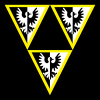
Is this the real-life Imperial Soldiers' colony?
By
Lord James, in LEGO Pirates
-
Recently Browsing 0 members
No registered users viewing this page.

By
Lord James, in LEGO Pirates
No registered users viewing this page.